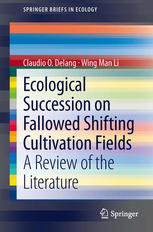

Most ebook files are in PDF format, so you can easily read them using various software such as Foxit Reader or directly on the Google Chrome browser.
Some ebook files are released by publishers in other formats such as .awz, .mobi, .epub, .fb2, etc. You may need to install specific software to read these formats on mobile/PC, such as Calibre.
Please read the tutorial at this link: https://ebookbell.com/faq
We offer FREE conversion to the popular formats you request; however, this may take some time. Therefore, right after payment, please email us, and we will try to provide the service as quickly as possible.
For some exceptional file formats or broken links (if any), please refrain from opening any disputes. Instead, email us first, and we will try to assist within a maximum of 6 hours.
EbookBell Team

0.0
0 reviewsThe book reviews the literature on the ecological succession of plants on fallowed swiddens in tropical forests. Patterns of ecological succession in tropical forests are insufficiently understood, partly because results are scattered through a large number of case studies reported in academic articles. So far, no publication has attempted to bring these different case studies together to identify common patters and trends. The goal of the book is to review the different case studies, and identify common patterns of ecological succession in fallowed swiddens, as well as to pinpoint the factors that cause ecological succession in some areas to differ from those in other areas. The book is organised in four different sections: forest structure, forest diversity, species composition, and the factors that contribute to differences in forest recovery rates (the number of times the field was burned, the length of fallow period, the type of soil, and the type of forest). This book is an important contribution to tropical forestry and shifting cultivation. Deforestation and forest degradation are the largest sources of CO2, and shifting cultivation is one of the main culprits. For this (and other economic and political) reason governments attempt to curtail shifting cultivation by shortening the years the fields can be left fallow, or outright outlawing the farming practice. Yet, there is insufficient understanding of the processes of ecological succession in fallows, which raises the questions as to whether the policy fulfils its objectives.